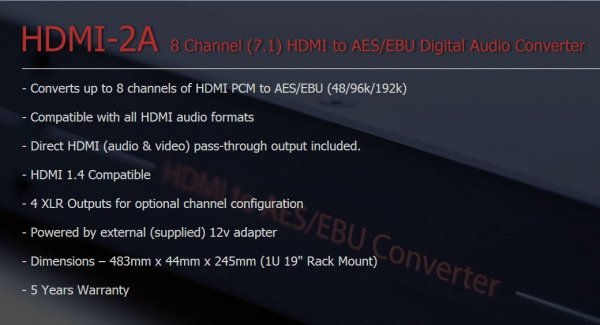You can buy an HDMI to AES converter.
To my knowledge, for this type of converter to be compliant with HDMI license, it would need to downsample HDMI inputs to 48/16 output.
I think the Lynx AES16e card will fit in the Zuma, but then you can't use the USB card if you desire it also.
I need USB as well. I'm still back to needing two servers.
In JRiver's DSP Studio you set Output Mode to 5.1, activate JRSS mixing, and check "Move Center to Front L/R." Then in Parametric Equalizer you add "Adjust the Volume" and increase the LFE by 4 dB (since your are adding to two channels you don't need +10dB). In "Mix Channels" add the LFE to the right and left channels. If you wanted, you could copy the rear channels to the User channels, add high pass filters to the surrounds, and add low pass filtered content from the user channels to the mains. This routes the lower bass from the surrounds to the mains. Finally, I would move the surrounds from channels 5 & 6 to channels 3 (center) and 4 (sub) so you could use the first two pairs of AES output.
I know it can be done in Jriver, but you were talking about playing discs from a drive. Can you run discs playing from a drive through JRiver?







